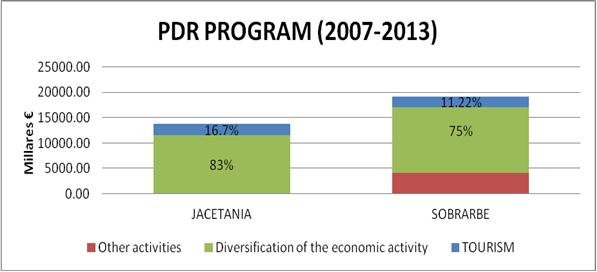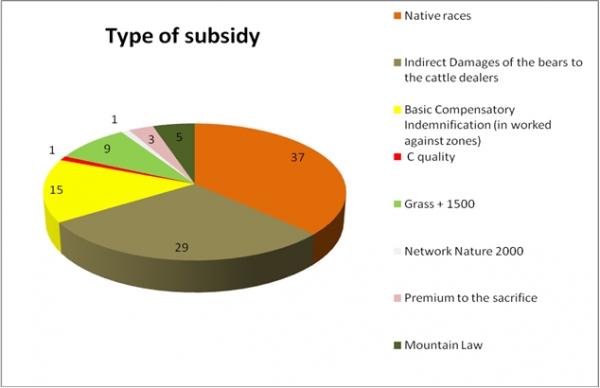Policy context
Common Agricultural Policy: 2nd pillar - Rural development policy (Aragón)
Implemention of the CAP (2nd pillar) at the autonomous community level takes place through the Programme of Rural Development (PDR) of Aragón, 2007-2013. The program streamlines all rural development aid for Aragón, which was almost €14 million for the period 2007-2013. The program includes:
- measures to promote knowledge and to improve human potential (7.94%);
- measures to improve the quality of agricultural products (0.72%);
- measures on the viable use of agricultural areas (21.23%);
- measures to reconstruct and develop physical potential and promote innovation, receiving the greatest portion of the total public spending of the RDP.
Each rural area – or "Region" in the case of Aragón – relies on its corresponding Plan of Zone, a document establishing a rural development strategy and financial commitments for an established region. Details are articulated through an agreement between the General Administration of the State and the Government of Aragón and participation of the regions.
Project development is done by Local Action Groups (LAGs), located in the counties (comarcas). There are 33 counties and 20 LAGs in Aragón. The Central Pyrenees study site includes two counties and two LAGs, Jacetania - Alto Gallego and Sobrarbe - Ribagorza. All city councils participate in LAGs alongside more than 90 other entities (cooperatives, associations etc).
Financing of measures in two LAG areas, 2007-2013
| Programme | Alto Gállego (mill €) | Sobrarbe (mill €) | LEDDRA study site (mill €) |
| PDR (2007-2013) | 13.8 | 17.4 | 31.2 |
| Tourism | 2.3 | 1.9 | 4.2 |
Source: http://www.aragonrural.org
The population of both LAGs is different, more than 12,000 inhabitants. Nevertheless, the distribution of the funds is greater for the Sobrarbe zone, which has lower population density and relies heavily on agricultural and cattle activity (12% of the population versus 6% of the population in the High Gallego region).

Available measures applied in the area are as follows.
- Compensation for work in disadvantaged areas: 94 €/ha for Mountain zones and 57 €/ha for non-mountain zones.
- Natura 2000 payments: protection of nonproductive woodland (22 €/ha), extensive grazing, grazing at least 150 days/year, maintaining grazing pressure between 0.4 and 1.3 LU /ha (large livestock unit per ha), compensation for regulatory limitations (unitary bonus - 120 €/ha.
- Maintenance of pure native races in danger of extinction: unitary bonus (121 €/LU).
- Maintenance of the grazing on meadows and grasslands: 36 €/ha rising for grasslands above 1500 m altitude (“puertos”).
- Slaughter premium.
The breakdown of type of aid demanded by the 85 farmers polled in the study site is shown below.

The two regions in the study site exhibit significant high per capita rent, population increases and diversification of socio economic activities since 1980, particularly since the Rural Development Programme of Aragón was first implemented in 2002. Local Action Groups have been very effective with regard to monitoring, dissemination and technical support of the program, resulting in employment generation, with small entrepreneurs serving to complement primary sector activity.
